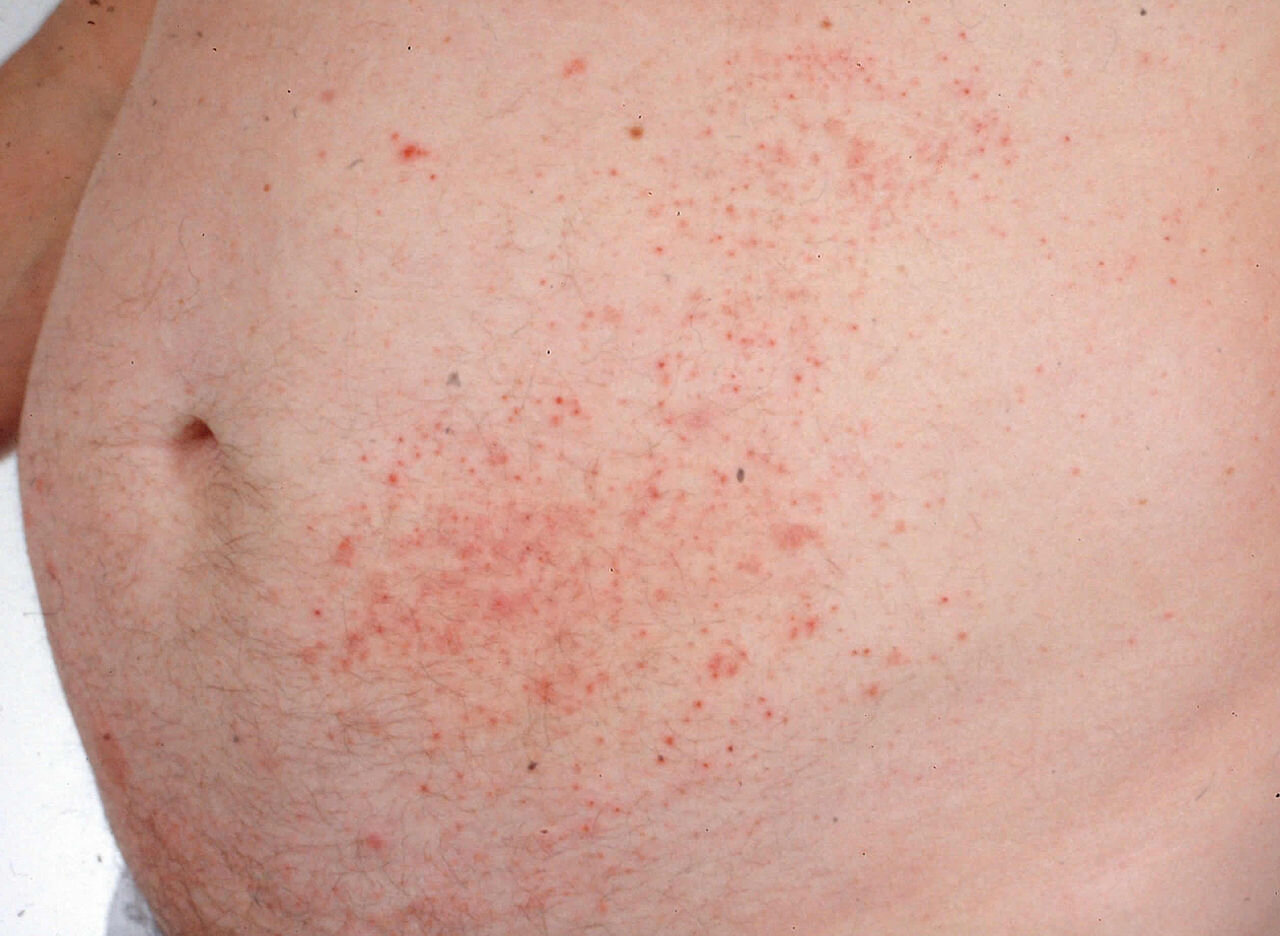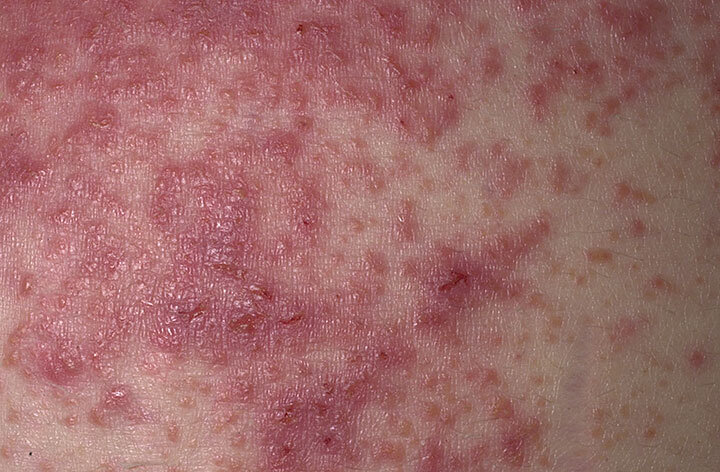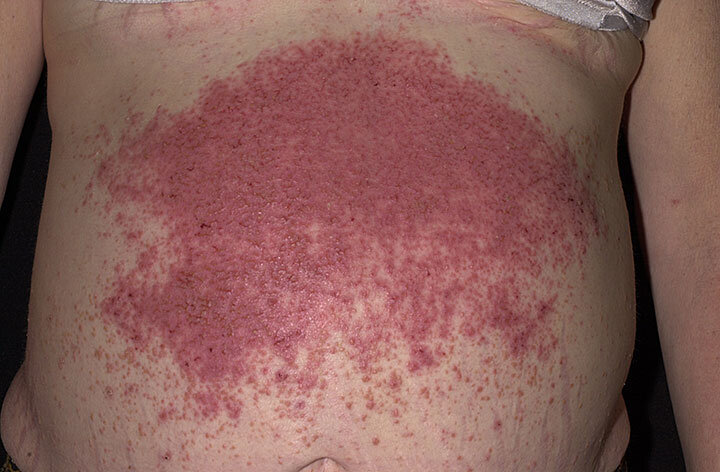Dermatitis Herpetiformis
Patient information leaflet by British Association of Dermatologists
NHS Scotland Information
Dermatitis herpetiformis is characterized by
intensely itchy
chronic papulovesicular eruptions,
usually distributed symmetrically on extensor surfaces (buttocks, back of neck, scalp, elbows, knees, back, hairline, groin, or face)
diagnosis of DH is confirmed by a skin test called a skin biopsy.
DH can appear at any age, but is most commonly diagnosed in those between the ages of 15 and 40.
DH is caused by the body's immune system reacting to gluten in foods containing wheat, barley and rye.
Most people with DH will be symptomatic of coeliac disease:
Most people with DH will have gut symptoms: diarrhoea, constipation, stomach pain, bloating.
The treatment for DH is a lifelong gluten-free diet.
Dapsone may be offered to alleviate skin itching and blisters, however, dapsone therapy carries a small risk of agranulocytosis and haemolytic anaemia.



If on long-term dapsone treatment, patients and their carers should be told how to recognise signs of blood disorders and advised to seek immediate medical attention if symptoms such as fever, sore throat, rash, mouth ulcers, purpura, bruising or bleeding develop.
